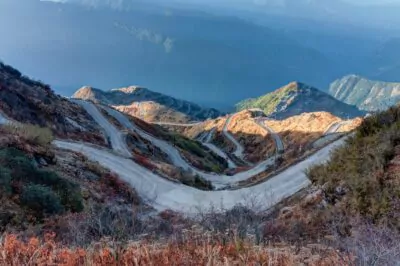Contributed by Tim Moore with Backyard Boss
The time of year has come where we start putting away the swimming accessories and pulling out the sweaters. At least that’s the way it is in some regions of the world. Whether your winters are filled with snow and icy grounds or milder climates, composting during the winter is just as important as composting during the peak growing season.
There are a great many benefits of using compost over fertilizer. It is an organic way to supply nutrients to your garden. Not only will applying compost to your soil make it nutrient rich, it helps with moisture retention, resistance to diseases and can aid in keeping a control on those weeds.
Looking good is a result of being healthy and the nice thing about compost is that it helps our gardens and lawns look great and produce healthy food the natural way. Here are some great ways to start a compost this winter or to keep up the one you already have.
Build Your Compost
To create compost of your grass clippings, dead leaves from your trees, eggshells and coffee grounds, first you need a location. You can create a compost pile in your backyard or you can get a bin or a tumbler, which are both great for mixing and churning your compost.
To Get it Started
First, spread a layer of dry brown matter like leaves or straw where your pile will be or in the container you purchased. Then put a layer of green materials like grass clippings. Top that with a little bit of soil and then another layer of brown material. Get the hose and wet them a little but not too much.
Continue this process and this ration of 2 layers of brown with one green in between until your pile is 3 feet high. Every week you should turn or stir it with a shovel or garden fork. Add other materials as the week goes by. You should see steam rise from you compost, which means that things are beginning to decay.
Composting 101
Vertical Gardening: Take Your Garden to New Heights
Urban Gardening: Regrow Your Kitchen Veggies
How to Make the Most Of the Cold
Composting is different in the winter because when the weather drops in temperature, the aerobic bacteria that is active in your compost slows down. This results in reduced or halted composting. The process will resume when the weather warms up but until then, it is important to keep up your compost during the winter.
There are steps you can take to protect your compost so when the warm weather comes around next spring, you and your compost will be ready.
1—Get It Ready In The Fall
While the leaves are falling, keep adding them to your compost pile. With the added materials the compost process will have more to work with during the winter months. The University of Illinois Extension suggests for their residents to have a compost pile that is one cubic yard before the winter sets in. Illinois is in the Midwestern United States, which can get cold, really cold, if you need a climate to compare with your own.
2—Cover It
Cover the pile with a tarp. This will keep it from collecting precipitation and help the pile retain its heat, which builds when the bacteria begin to decompose your compost material. The internal heat inside your pile will slow and may seem like it stops completely but do not worry. If kept well, the bacteria will activate in the spring.
3—Cover It Again
Once you make sure your compost pile has a cover, it’s time to give it a roof. If you have a bin or a tumbler then this should already be taken care of. If your compost is in a pile in your backyard, then build a sturdy cover. A roof will keep your compost pile protected from the harsh elements.
4—Build walls
Again, if you have a bin or a tumbler then this will not apply to you. If you build a roof for your compost pile then go a step further and put together some walls. The concept is to fully shut in your pile with some type of barrier. When you do this, there are less odds of it freezing and collecting excess frosting.
5—Tear It Up
The Texas AgriLife Extension Service suggests shredding your compost material to less than two inches. This gives the materials ample opportunity to heat up because of the uniform layers. They say it can “insulate” the compose from extreme weather.
6—Dig A Hole
If you can’t build a shelter for your compost, then try digging a burrow for it to live in the winter. You can even dig a trench around your garden and add to it with your eggshells and coffee grounds. Then you cover it and let the compost start working right where you need it.
The term is “compost-holing.” Choose a space in your yard to dig a hole that is a foot deep. Fill it with your compost materials and then cover it with boards and bricks. This will allow you to continue to compost during the winter since your compost should remain active.
Go For It!
We love all things natural and strive to live lives without the addition of harmful chemicals, so composting year-round is a win to us. So, try continuing your compost in the winter and watch how your grass and vegetables benefit from it when the warmer seasons come around.
Tim Moore is the lead editor of Backyard Boss and is a lifelong backyard enthusiast. He grew up immersed in the outdoors, camping every weekend and tending to the backyard with his family. Follow Tim and Backyard Boss on Facebook, Pinterest and Twitter for everyday inspiration for your backyard.







